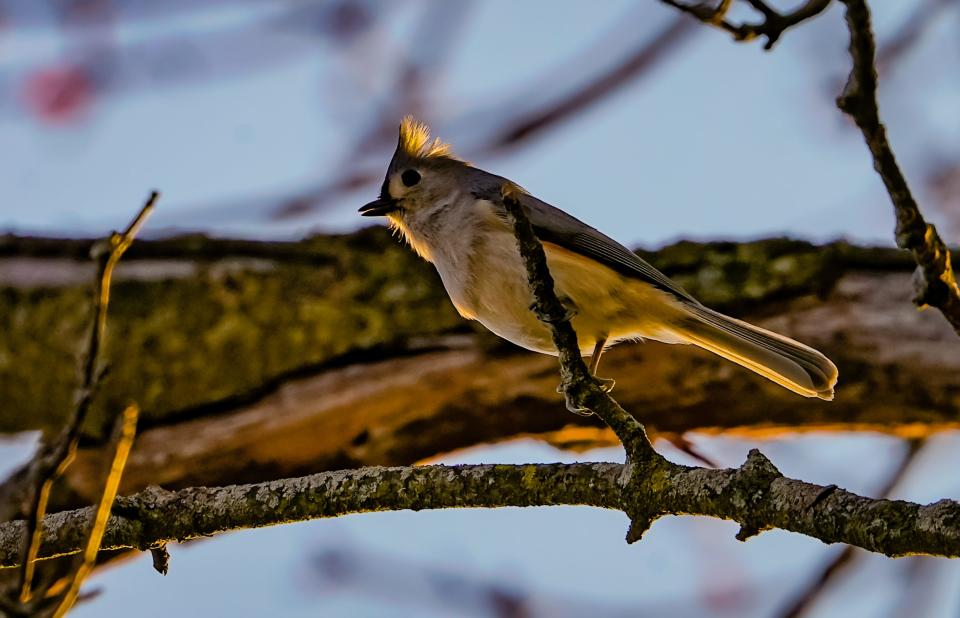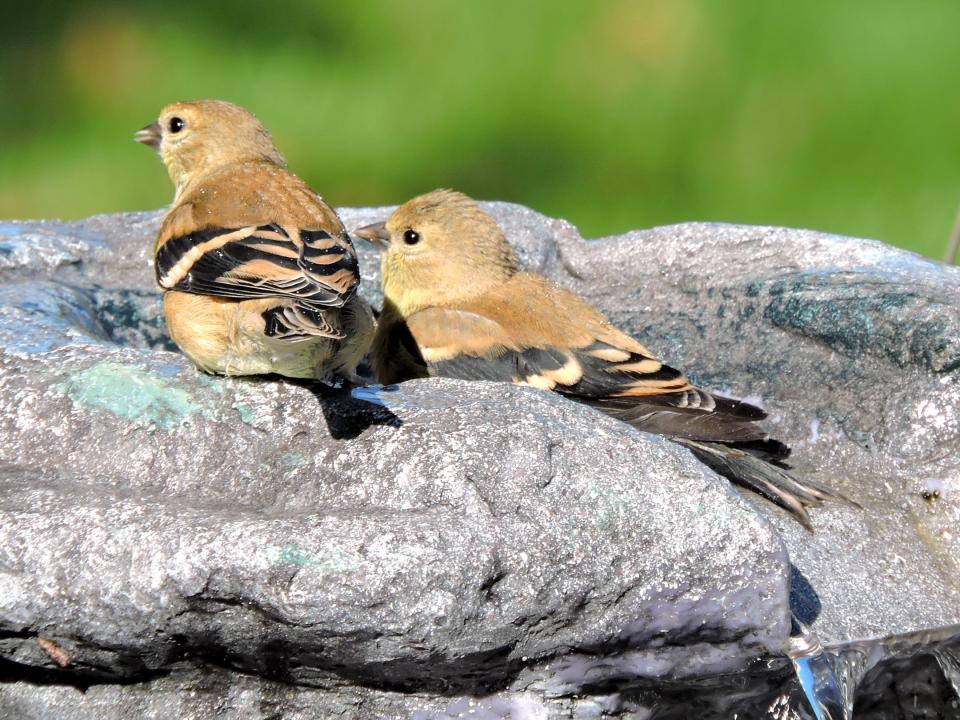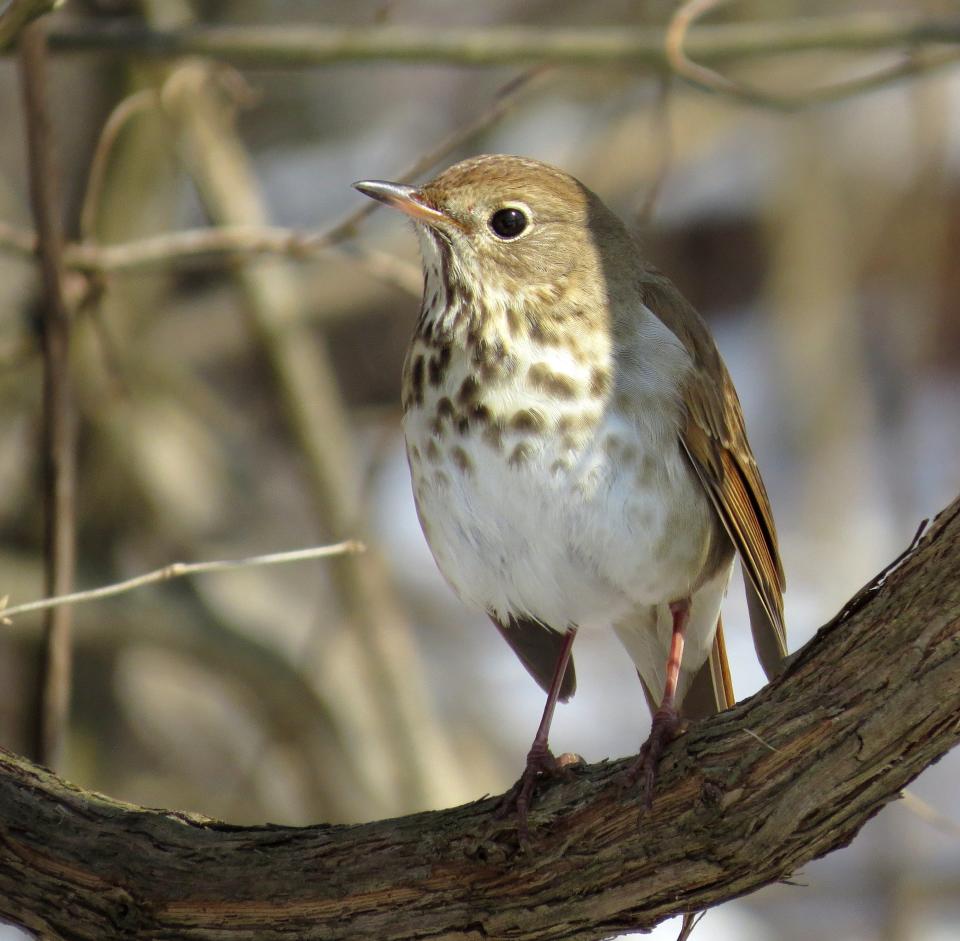Last Green Valley chief ranger: The joy of bird watching, and how we can protect them
"Now all buds may swell, methinks; now the summer may begin for all creatures.”May 5, 1852, From the Journal of Henry David Thoreau
Two weeks ago, I stepped out into the early morning chill to watch the sunrise paint the eastern horizon. Silently welcoming a new day to early risers like me, the sky above the tree line of our back pasture was splashed with crimson red and brilliant yellow light. I was struck, not just by the beauty of the morning, but also by the cacophony of bird songs greeting me. And now, this first week of May, there is no doubt the cold and wet of April has retreated and the warmer days of spring have arrived.
On warmer nights we open our bedroom windows, and the predawn avian chorus is an early wake-up call. I slip outside at first light and listen to more and more species of birds singing their territorial and courtship tunes of nesting season. Like many folks I know, I have the Merlin Bird App produced by the Cornell Lab of Ornithology on my cell phone, which records bird songs and quickly identifies the species. I am amazed at the variety of bird voices it validates. With my diminished hearing due to “well-seasoned” years, I couldn’t possibly hear or make out so many different songs. Some mornings I delight in waking up my wife to report 10 or more species in just a couple of minutes.

For the past few weeks, Merlin has recorded American Robin, Tufted Titmouse, American Goldfinch, Blue Jay, House Finch, Carolina Wren, Song Sparrow, Chipping Sparrow, White-throated Sparrow, Northern Cardinal, European Starling, Red-winged Blackbird, Black-capped Chickadee, White Breasted Nuthatch, Red-bellied Woodpecker, House Wren, House Sparrow, Gray Catbird, Eastern Bluebird, American Crow and Red Shouldered Hawk. I was pleased to see and hear the Northern Flicker stopping by on its way to northern nesting grounds.
The neotropical migrant Wood Thrush and Hermit Thrush have yet to arrive. Their beautiful, fluted melodies are my favorite and another true sign of summer. I’ll be listening for the arrival of Red-eyed Vireo, Veery and Yellow Warbler. Last year we had Baltimore Oriole, Eastern Towhee, Rose Breasted Grosbeak, Scarlet Tanager and Indigo Bunting visit our backyard. The rare visit of the Indigo Bunting was a special sight with its amazing deep shade of blue feathers.

In 2023, the Connecticut Audubon Society published its Connecticut State of the Birds. For bird lovers, this is an important document to help us better understand what is happening to our state’s bird population. It can be found at www.ctaudubon.org/state-of-the-birds, where you can download a PDF of the report.
The stark reality is that during the past 50 years, our bird population has plummeted with an estimated 3 billion fewer birds in North America than there were in 1970. The 2023 report examined five conservation issues critical to birds. The five areas include:
Previous editions of Connecticut State of the Birds reported millions of birds die before their time because of flying into windows, especially tall buildings. Improvements and new technologies have been implemented by Yale in New Haven for making city buildings and houses safer for birds.
Our migrating birds rely on our coastal urban areas for rest and food sources before moving further inland to nesting grounds. Efforts are underway to document specific forested urban areas where birds first arrive, and how to improve urban, bird-friendly habitat.
A study on limiting the number of hiking trails within our state’s nature preserves that traverse through critical bird nesting habitat.
The Connecticut Bird Atlas will soon be available, and this important project is summarized in the Connecticut State of the Birds and reintroduces the idea that the Bird Atlas will be a catalyst for bird conservation funding in the years ahead.
There is a New England-wide regional effort to protect millions of acres as wildlands, but the pace of land protection needs to increase to meet the needs of both habitat and climate change goals.

While we all enjoy seeing birds, I think it is also important that we educate ourselves about the ongoing research and opportunities to better understand our bird populations. Spring is a great time of year for folks interested in birds to get outdoors and experience them up close, especially as our native and seasonal bird numbers swell and nesting season begins.
The Last Green Valley’s Spring Outdoors is now in full swing and runs until the Summer Solstice on June 20 with seven more weeks of programs. There are several hosted by the Connecticut Audubon Society, including early morning bird walks at their Bafflin Sanctuary in Pomfret with Andy Rzeznikiewicz, as well as Trail Wood Bird Walks in Hampton, Warbler Day, the 17th Annual 90 Bird Count Day, Bird Banding Demonstration, and more. Check out the complete schedule at thelastgreenvalley.org/spring-outdoors-events
As an early riser, I welcome the music of birdsongs this time of year. It fills my heart with gladness. Each new day their melody brings a renewed sense of wonder for our natural world. May is here and the chorus of birds means soon I’ll also be looking for bird hatchlings as they develop and launch from their natal nests in that first leap of faith into the unknown.
We are fortunate to share our home, The Last Green Valley, with so many species of birds that bring joy into our daily lives. I hope you’ll join me, and let us care for it, enjoy it, and pass it on.
Bill Reid is the chief ranger of The Last Green Valley National Heritage Corridor. He can be reached at bill@tlgv.org or 860-774-3300.
This article originally appeared on Gardner News: Bird songs heard in Last Green Valley National Heritage Corridor in CT

